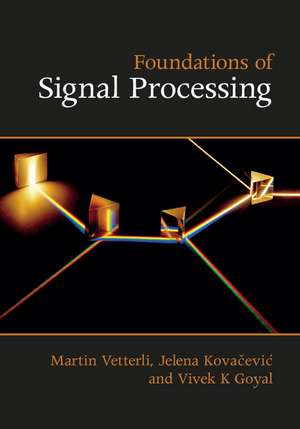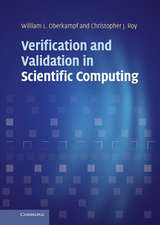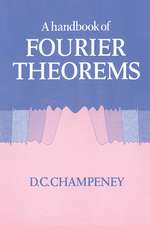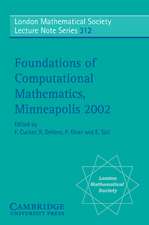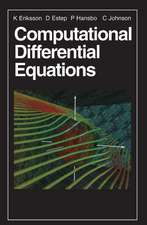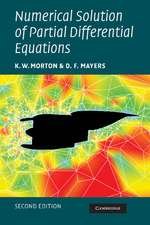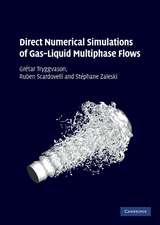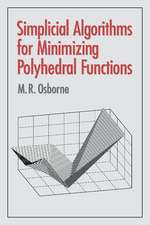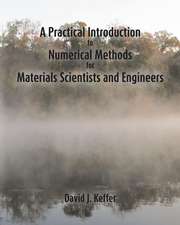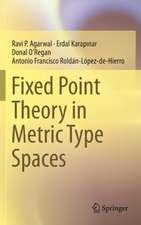Foundations of Signal Processing
Autor Martin Vetterli, Jelena Kovačević, Vivek K Goyalen Limba Engleză Hardback – 3 sep 2014
Preț: 606.03 lei
Preț vechi: 680.94 lei
-11% Nou
Puncte Express: 909
Preț estimativ în valută:
115.98€ • 119.81$ • 96.52£
115.98€ • 119.81$ • 96.52£
Carte tipărită la comandă
Livrare economică 26 martie-09 aprilie
Preluare comenzi: 021 569.72.76
Specificații
ISBN-13: 9781107038608
ISBN-10: 110703860X
Pagini: 738
Ilustrații: 200 b/w illus. 44 tables 190 exercises
Dimensiuni: 180 x 252 x 35 mm
Greutate: 1.59 kg
Ediția:Neuauflage. New.
Editura: Cambridge University Press
Colecția Cambridge University Press
Locul publicării:New York, United States
ISBN-10: 110703860X
Pagini: 738
Ilustrații: 200 b/w illus. 44 tables 190 exercises
Dimensiuni: 180 x 252 x 35 mm
Greutate: 1.59 kg
Ediția:Neuauflage. New.
Editura: Cambridge University Press
Colecția Cambridge University Press
Locul publicării:New York, United States
Cuprins
1. On rainbows and spectra; 2. From Euclid to Hilbert: 2.1 Introduction; 2.2 Vector spaces; 2.3 Hilbert spaces; 2.4 Approximations, projections, and decompositions; 2.5 Bases and frames; 2.6 Computational aspects; 2.A Elements of analysis and topology; 2.B Elements of linear algebra; 2.C Elements of probability; 2.D Basis concepts; Exercises with solutions; Exercises; 3. Sequences and discrete-time systems: 3.1 Introduction; 3.2 Sequences; 3.3 Systems; 3.4 Discrete-time Fourier Transform; 3.5 z-Transform; 3.6 Discrete Fourier Transform; 3.7 Multirate sequences and systems; 3.8 Stochastic processes and systems; 3.9 Computational aspects; 3.A Elements of analysis; 3.B Elements of algebra; Exercises with solutions; Exercises; 4. Functions and continuous-time systems: 4.1 Introduction; 4.2 Functions; 4.3 Systems; 4.4 Fourier Transform; 4.5 Fourier series; 4.6 Stochastic processes and systems; Exercises with solutions; Exercises; 5. Sampling and interpolation: 5.1 Introduction; 5.2 Finite-dimensional vectors; 5.3 Sequences; 5.4 Functions; 5.5 Periodic functions; 5.6 Computational aspects; Exercises with solutions; Exercises; 6. Approximation and compression: 6.1 Introduction; 6.2 Approximation of functions on finite intervals by polynomials; 6.3 Approximation of functions by splines; 6.4 Approximation of functions and sequences by series truncation; 6.5 Compression; 6.6 Computational aspects; Exercises with solutions; Exercises; 7. Localization and uncertainty: 7.1 Introduction; 7.2 Localization for functions; 7.3 Localization for sequences; 7.4 Tiling the time–frequency plane; 7.5 Examples of local Fourier and wavelet bases; 7.6 Recap and a glimpse forward; Exercises with solutions; Exercises.
Recenzii
'This is a major book about a serious subject - the combination of engineering and mathematics that goes into modern signal processing: discrete time, continuous time, sampling, filtering, and compression. The theory is beautiful and the applications are so important and widespread.' Gil Strang, Massachusetts Institute of Technology
'A refreshing new approach to teaching the fundamentals of signal processing. Starting from basic concepts in algebra and geometry, [the authors] bring the reader to deep understandings of modern signal processing. Truly a gem!' Rico Malvar, Microsoft Research
'A wonderful book that connects together all the elements of modern signal processing … it's all here and seamlessly integrated, along with a summary of history and developments in the field. A real tour-de-force, and a must-have on every signal processor's shelf!' Robert D. Nowak, University of Wisconsin, Madison
'Finally a wonderful and accessible book for teaching modern signal processing to undergraduate students.' Stéphane Mallat, École Normale Supérieure
'Most introductory signal processing textbooks focus on classical transforms, and study how these can be used. Instead, Foundations of Signal Processing encourages readers to think of signals first. It develops a 'signal-centric' view, one that focuses on signals, their representation and approximation, through the introduction of signal spaces. Unlike most entry-level signal processing texts, this general view, which can be applied to many different signal classes, is introduced right at the beginning. From this, starting from basic concepts, and placing an emphasis on intuition, this book develops mathematical tools that give the readers gets a fresh perspective on classical results, while providing them with the tools to understand many state of the art signal representation techniques.' Antonio Ortega, University of Southern California
'Foundations of Signal Processing … is a pleasure to read. Drawing on the authors' rich experience of research and teaching of signal processing and signal representations, it provides an intellectually cohesive and modern view of the subject from the geometric point of view of vector spaces. Emphasizing Hilbert spaces, where fine technicalities can be relegated to backstage, this textbook strikes an excellent balance between intuition and mathematical rigor, that will appeal to both undergraduate and graduate engineering students. The last two chapters, on sampling and interpolation, and on localization and uncertainty, take full advantage of the machinery developed in the previous chapters to present these two very important topics of modern signal processing, that previously were only found in specialized monographs. The explanations of advanced topics are exceptionally lucid, exposing the reader to the ideas and thought processes behind the results and their derivation. Students will learn … why things work, at a deep level, which will equip them for independent further reading and research. I look forward to using this text in my own teaching.' Yoram Bresler, University of Illinois, Urbana-Champaign
'A refreshing new approach to teaching the fundamentals of signal processing. Starting from basic concepts in algebra and geometry, [the authors] bring the reader to deep understandings of modern signal processing. Truly a gem!' Rico Malvar, Microsoft Research
'A wonderful book that connects together all the elements of modern signal processing … it's all here and seamlessly integrated, along with a summary of history and developments in the field. A real tour-de-force, and a must-have on every signal processor's shelf!' Robert D. Nowak, University of Wisconsin, Madison
'Finally a wonderful and accessible book for teaching modern signal processing to undergraduate students.' Stéphane Mallat, École Normale Supérieure
'Most introductory signal processing textbooks focus on classical transforms, and study how these can be used. Instead, Foundations of Signal Processing encourages readers to think of signals first. It develops a 'signal-centric' view, one that focuses on signals, their representation and approximation, through the introduction of signal spaces. Unlike most entry-level signal processing texts, this general view, which can be applied to many different signal classes, is introduced right at the beginning. From this, starting from basic concepts, and placing an emphasis on intuition, this book develops mathematical tools that give the readers gets a fresh perspective on classical results, while providing them with the tools to understand many state of the art signal representation techniques.' Antonio Ortega, University of Southern California
'Foundations of Signal Processing … is a pleasure to read. Drawing on the authors' rich experience of research and teaching of signal processing and signal representations, it provides an intellectually cohesive and modern view of the subject from the geometric point of view of vector spaces. Emphasizing Hilbert spaces, where fine technicalities can be relegated to backstage, this textbook strikes an excellent balance between intuition and mathematical rigor, that will appeal to both undergraduate and graduate engineering students. The last two chapters, on sampling and interpolation, and on localization and uncertainty, take full advantage of the machinery developed in the previous chapters to present these two very important topics of modern signal processing, that previously were only found in specialized monographs. The explanations of advanced topics are exceptionally lucid, exposing the reader to the ideas and thought processes behind the results and their derivation. Students will learn … why things work, at a deep level, which will equip them for independent further reading and research. I look forward to using this text in my own teaching.' Yoram Bresler, University of Illinois, Urbana-Champaign
Notă biografică
Descriere
This comprehensive and accessible textbook introduces students to the basics of modern signal processing techniques.
